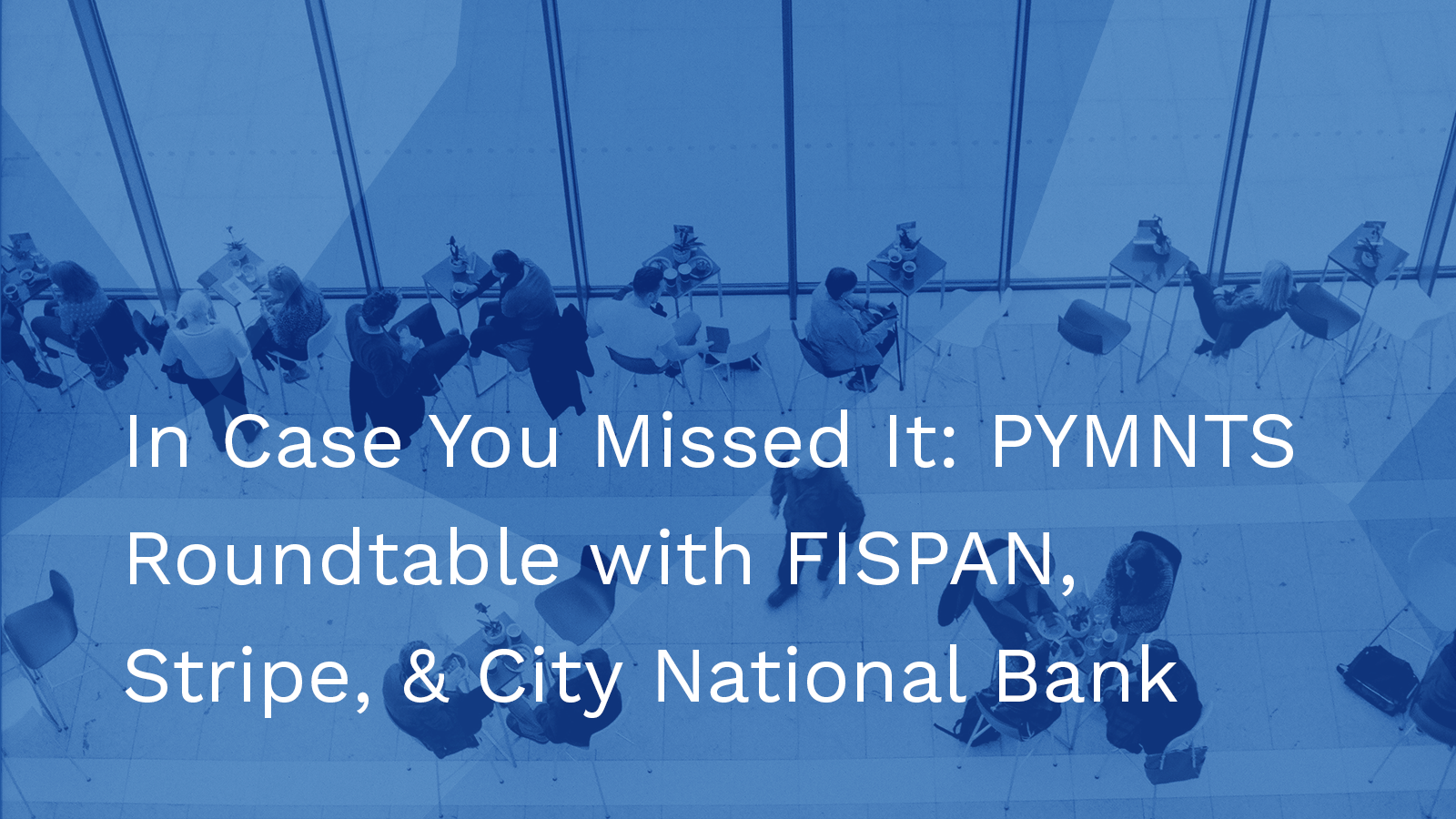
In Case You Missed It: PYMNTS Roundtable with FISPAN, Stripe, & City National Bank

The evolution of user experience in business banking has become increasingly digital, and embedded banking is helping consumers realize greater efficiencies and convenience in their day-to-day. Now, businesses want in on the same benefits.
In a roundtable discussion hosted by PYMNTS CEO Karen Webster, FISPAN founder and CEO Lisa Shields stated that “corporates have always wanted to consume financial and banking services within their [own] banking applications.” There is an increasing demand from corporates for a more seamless banking experience; a demand that FISPAN is helping banks achieve.
However, businesses operate in far more complex environments than the individual consumer, and that means there are key differences in the needs that must be addressed. These nuances, in addition to evidently varying requirements between corporates and SMB clients, are a growing challenge for both banks and FinTechs to strategize the approach they’ll need to take in order to get to the right spot.
Tara Seshan, Business Lead of Treasury at Stripe, joined Lisa and Verna Grayce Chao, EVP of Treasury Management Solutions at City National Bank, in the conversation, saying that from a pure user experience perspective, the solution is obvious. Yet, businesses are indeed wildly different from one another and the desired outcomes become contingent on the customer, business model, and the issue to be solved at hand. The drivers of embedded banking for net new businesses, for example, may be product market fit, while for established businesses, it may be more revenue-driven.
FISPAN customers are a different story, Shields added, who are fast-growing software companies and existing manufacturing businesses that are not necessarily payment experts (nor do they need to be), but look to embedded banking to lower the costs of back office operations and achieve greater efficiencies overall.
FinTech has long been a key factor in the seamless integration of financial applications, but the growing demand for personalized business banking experiences has opened new doors for how Financial Institutions (FIs) and service providers serve their most important clients. According to Chao, this means developing strategies that center around the client experience.
Finding the Winning Strategy
With so many moving parts that contribute to both the capabilities and demand for embedded banking services, Seshan noted that there isn’t just one single approach that’s going to win and take all, but instead, a collection of complementary paths — many of which that may be completely different than what FIs have previously considered in the past.
While technology has helped to unlock a wider variety of strategies for banks to take, such a vast array of options does leave considerable room for missteps. It’s a danger for FIs and banks to pick the wrong strategy or be apathetic, said Chao, “you need to know who you are, who you’re servicing, and which model is correct for you.”
She added that a company’s strategy requires some soul-searching, and then a commitment must be made. But, it doesn’t just have to be about technology; if you know the client(s) you’re trying to serve, you can always compete on service. Tech itself doesn’t have to be the differentiating factor, but the way that it’s embraced will help banks enable the opportunities that foster such differentiation and a successful, sustainable advantage.
At the end of the day, the demand for personalized, digital banking experiences will continue to accelerate the way it has over the past year, but the ability to execute is notably changing. It’s now easier than ever for financial service providers to offer business banking solutions in a more integrated and streamlined way, and there’s an opportunity for FIs to move more quickly than they are right now — where banks no longer need to worry about spinning up the technology themselves.
As we look ahead to 2021, there is an evident shift in the paradigm of the banking and payments industry, and Karen Webster, Tara Seshan, Verna Grayce Chao, and FISPAN’s own Lisa Shields all agreed that it’s only the end of the beginning of what’s to come for the future of embedded banking.
__
To watch the roundtable discussion, you can view the recording here.

